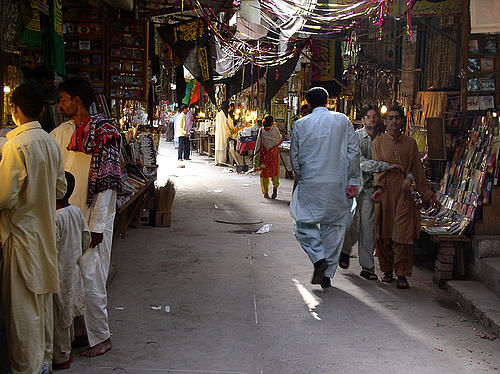Even after the census process was completed, the provisional results were delayed by a month, ostensibly because of ongoing political tumult. This has raised some questions about the credibility of the results.
Pakistan’s elusive census report is finally out and shows that the country is sitting on a demographic tinderbox.
According to the provisional results of Census-2017, population of Pakistan surged by 57 percent from 132.22 million in 1998 to 207.77 million in 2017. At 2.4 percent, Pakistan’s population growth rate is amongst the highest in the world outside Africa and Arab world, and is much higher than 1.89 percent estimated in recent economic surveys.
While population growth rates have come down for Punjab, Sindh and Pakistan as a whole; they have actually risen for Balochistan, Khyber Pakhtunkhwa and FATA. When almost two-thirds of the population of a rapidly radicalising state is below the age of 35, with over 100 million unemployed, the result can be catastrophic.
(Read Raza Rumi’s column on the findings of the Pakistan census here)
The results of an earlier census, held in 2011, were annulled due to various allegations about procedural flaws. Population figures have always been contentious in Pakistan as all ethnic groups, other than Punjabis, believe that their numbers have been manipulated to deny them their rightful share in federal resources.
Consequently, it took judicial intervention, with army’s tacit support, to force authorities to conduct a census. Even after the process was completed, the provisional results were delayed by a month, ostensibly because of the ongoing political tumult. This has raised some questions about the credibility of the results.
The first to reject the results have been various factions of Muttahida Qaumi Movement (MQM). The party has controlled Karachi for the last few decades and is perceived as the representative of Mohajirs, or migrants from India. They claim that the population of Karachi shown in provisional results as 14.9 million is way below their estimate of 30 million.
The results show the population growth in Karachi to be less than the national average, which raises serious questions, because migration to urban centres from rural milieu has been the global trend. More significantly, Karachi, a key economic hub, has attracted most of the Internally Displaced Persons.
But its population growth rate is almost half that of Lahore. Various military operations undertaken by Pakistani Army in Pakhtoon belt, from Rah-e-Rast to Zarb-e-Adb have displaced more than five million people internally. Many of them have migrated to Karachi, making it the city with largest Pakhtoon population, surpassing both Kabul and Peshawar. With such a massive influx of outsiders, the census figures for Karachi do appear to be the deep state’s attempt to diminish MQM’s influence.
Another group that has voiced its opposition to the results are the Sindhi nationalists, who are piqued by the fact that the urban population in Sindh is said to significantly exceed the rural population. Unlike other provinces the rural-urban divide is most stark in Sindh. It is the only province to have separate quotas in federal jobs for the urban population dominated by Urdu-speaking Mohajirs and for the Sindhi-speaking rural population.
The results indicate that Sindhis have already become a minority in their traditional homeland. The census also highlights the uneven population growth among various ethnic groups, which has the potential to further accentuate the ethnic divide.
Although the results do not give the ethno-linguistic breakdown, it is evident that the birth rate among the more educated and urban communities has come down in comparison to those in which the human development index is abysmally low. Consequently, the number of Mohajirs and Punjabis is growing at a much slower rate than the Baloch, Sindhis and Pakhtoons.
The annual percentage growth rate of population has been the highest for Balochistan – the least developed province of Pakistan – at 3.37, followed by KP at 2.89, and Sindh at 2.41.
The fact that population growth in FATA is less than KP, is more a result of forced migration due to repeated military operations in FATA, rather than any socio-economic factor.
The population in Punjab, the largest province has increased by 2.13 percent only. According to the provisional results, the population share of various federating units has not changed drastically in last 19 years, with that of Balochistan and KP, having risen by one percent each and of Punjab having declined from 55.62 to 52.94 percent.
This raises serious questions about the credibility of the results, because the preliminary results of the quashed 2011 census showed the population of Punjab to have fallen below the crucial half-way mark to 47.52 percent.
As delimitation of parliamentary seats is going to be based on this census, the suspicion that the present ruling dispensation, perceived to be pro-Punjab, has fudged the figures will always remain.
Alok Bansal is Director India Foundation. The views expressed are his own.






